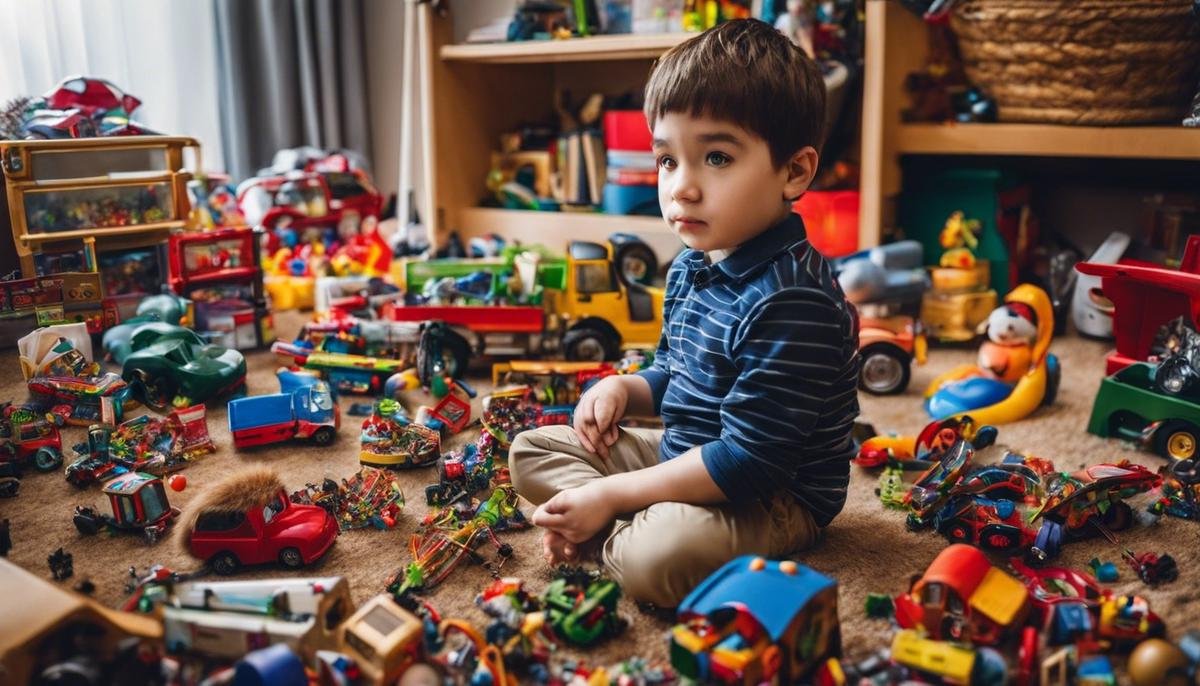
When we enter the realm of autism, it often feels like navigating an entirely different universe. Among its many complexities, one aspect that leaves many baffled is the tendency towards toy hoarding. In public discourse, obsessive behavior is often met with negativity and judgement – but is it really as simple as all that? Our comprehensive exploration will enlighten you about the underpinning reasons behind toy hoarding behaviors in children with autism and demonstrate that it’s often more than just a simple preference for excess. By illuminating the psychological aspects, the impact on familial life, practical management strategies, and how to create conducive environments, our discourse seeks to demystify this behavior and provide a clear pathway for understanding, empathy, and effective intervention.
Understanding Toy Hoarding in Autism
Unearthing the Reasons: Why Children with Autism Hoard Toys
As families, we all have our unique sets of joys and challenges; and for families with children on the autistic spectrum, certain behaviors, such as obsessive collecting or hoarding of objects like toys, may seem perplexing. Yet, as in all things parental, understanding is the key.
The inclination to hoard or collect items is a commonly observed behavior in children with Autism Spectrum Disorder (ASD). It could involve specific types of toys, or sometimes even seemingly random household objects. These collections may provide comfort, a sense of control, or simply a fascination with the objects’ characteristics.
Understanding why children with autism hoard requires delving deeper into the workings of the autism spectrum and its traits. Autism, at its core, is a neurodevelopmental disorder impacting social interaction, communication, and behaviors. It tends to develop repetitive behaviors and resistance to change and is known to often associate with sensory processing issues.
For a child on the spectrum, the world is experienced differently. Their heightened or decreased senses in certain areas – touch, taste, sight, or hearing – draw them towards particular materials, designs, shapes, or even sounds. This could result in what might seem like an unusual fixation on certain toys or objects.
The act of hoarding becomes a soothing mechanism, offering predictability and familiarity in their world. Items that may appear insignificant to others might offer comfort or stimulate their interest, alleviating feelings of anxiety and helping them manage their sensory processing experiences.
Furthermore, routine and predictability are exceptionally comforting for children with autism. As they tend to follow rigid routines and habits, hoarding might serve as an extension of this need for consistency. Their collected items provide a secure and constant anchor that they can rely on.
Laying out this understanding, ‘how should families approach this behavior’ is the question. It’s crucial to remember that interventions should never aim to erase or suppress this habit entirely. Children with autism, like all children, have ways they cope with the world around them. Hoarding or collecting might be their method.
Instead, you could consider limiting the quantity of the collected items if they’re excessively hoarding one type. A potential strategy could be creating a dedicated ‘safe’ space for your child’s collection. This tactic grants them control over the situation and affirms that their interests are recognized and respected.
Equally important is observing the objects of their fixation. Are they drawn to the texture, color, sound, or taste? Their preferences might provide valuable insights into their personal sensory experiences and could guide you in introducing them to new activities or therapies.
To conclude, akin to other behaviors associated with autism, understanding why children hoard toys primarily requires empathy, patience, and acceptance. It is about understanding their world, adapting to their needs, and providing an environment where they feel secure and loved. With these principles at the forefront, approaches to coping and supporting can be tailored and implemented. And remember, it’s okay to seek professional input when needed, be it from therapists, autism specialists, or support groups. After all, parenting is a journey that’s best travelled alongside others. So let’s build that community, learn together, love generously, and make our homes a haven for all.
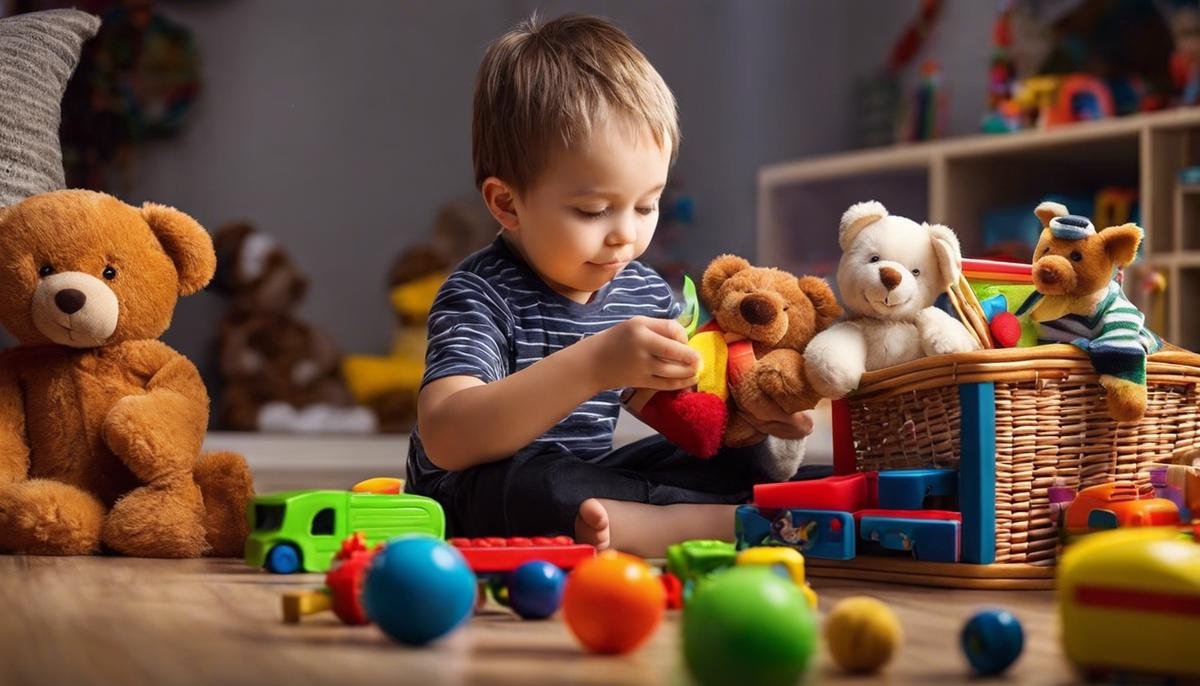
Psychological Aspects of Toy Hoarding
For a deeper understanding of this complex hoarding behavior in children with autism, let’s delve into the world of cognitive and emotional responses that influence it. It’s paramount to remember that not all children who have autism will exhibit hoarding behavior. Still, it’s a fairly common trait that provides a unique perspective on how these children construct their understanding of the world.
Cognitively, these children may view toys differently than neurotypical children do. A toy for them could mean more than just an item for play. It could serve as a pivotal piece in their structured world, providing a sense of order that is comforting and calming. We know that children with ASD often thrive on routines and predictability, and the same applies to their attachment to their toys.
In aligning with this theme of predictability, the persistence of sameness is a component of autism that can also contribute to hoarding behavior. The fear of loss or change may lead to toy hoarding as these children try to maintain a stable environment. For these children, toys represent predictability and control, qualities they often strive to achieve in a world that seems so disordered to them.
Emotionally, it’s also critical to consider the sense of ownership and identity that hoarding toys can represent for these children. Possessing, categorizing, or sorting their toys may give them a sense of individuality and autonomy, aspects that children with autism often struggle with due to their social and communication challenges.
Hence, toy hoarding can serve as a significant emotional outlet for children with autism, allowing them to feel in control, safe, and secure. It can also provide a reassuring sense of familiarity, which is especially important in novel or potentially stressful situations.
Though hoarding behavior may present challenges to parents and caregivers, particularly in terms of clutter control, it’s important to avoid abrupt disruptions to this behavior. Encouraging gradual reduction, promoting reciprocal play, and offering choices are all strategies that can help. Additionally, teaching children with autism about the value of donating and helping others can gradually reduce hoarding tendencies, instilling a sense of empathy and compassion.
Finally, remember to celebrate your child’s uniqueness. Understand that their toy hoarding behavior is not a purposeful act of defiance or misbehavior, but a method of coping with the complexities of the world around them. As a community, we need to cultivate an accepting and understanding environment for these children to foster their developmental growth while ensuring their emotional well-being.
To fully support your child, establishing proper communication and connection with experts in the field is essential. With professional help and guidance, you can better comprehend your child’s behavior and in turn develop effective strategies to manage it. Remember, it’s not about “correcting” the behavior, but rather understanding it, and possibly redirecting it in a non-intrusive manner. Our children with autism are not broken or flawed; they simply have a different way to interact with the world around them. So let’s embrace their unique approach and encourage an understanding and accepting world for them.
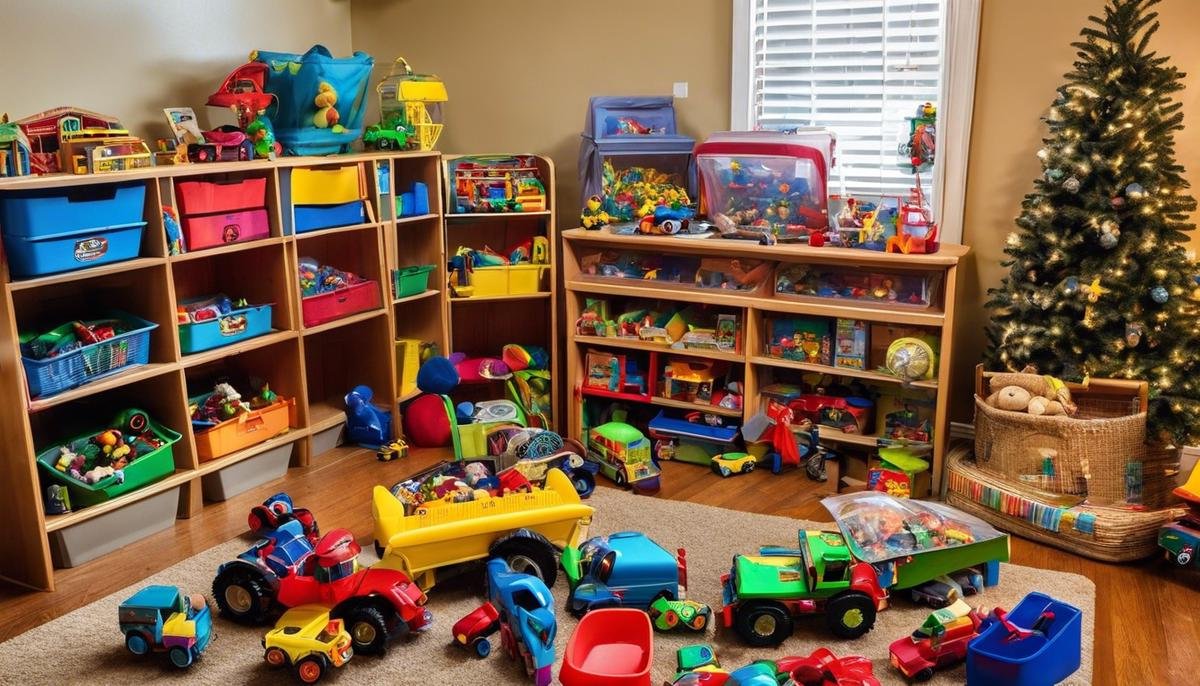
Impact of Toy Hoarding on Family Life
As we delve deeper into the subject of how toy hoarding by a child with autism affects family life, it’s crucial to understand the cognitive differences in how these children view toys. Unlike other children, kids with autism often perceive toys not merely as objects of play but as companions, sources of comfort, and a means to stimulate their senses.
Acquiring large quantities of toys can fill a need for predictability and sameness. Consistent patterns and familiar objects offer security to these children. Hence, the more toys they have, the more they experience this sense of stability, which dramatically aids their emotional well-being.
From an emotional standpoint, hoarding toys also has a significant relation to a sense of ownership and identity among children with ASD. Every toy holds a specific meaning and conveys a distinct sense of joy. As such, it’s important to be aware that toy hoarding isn’t merely an act of accumulation, but a deeply emotional outlet for these children.
Naturally, managing such behaviors can pose challenges within the family setup. However, gentle and patient strategies can go a long way in addressing these issues. For instance, consider gradual reduction methods, where small amounts of toys are removed over a period. This technique reduces the likelihood of causing distress or anxiety in the child.
Encouraging reciprocal play can also do wonders. Regular family playtimes provide an excellent platform to guide the child to share toys and understand that even with fewer items, they can still have fun.
Teaching children with autism about the value of donating and helping others is another approach that often yields positive results. Reinforcing positive behaviors with praise can make a considerable difference. Gradually, as the child starts identifying the joy of giving, the hoarding behavior might lessen.
Understanding, patience, and acceptance should underline all these approaches. Remember, every child with autism is unique and special in their way. Their interactions and behaviors are a part of who they are, rather than a thing to be corrected or changed.
Communication is paramount here. Create an open environment where the child feels comfortable expressing their feelings about their toys or any changes in their environment.
Finally, never hesitate to seek professional guidance. Autism specialists, therapists, or support groups can provide invaluable insights and strategies based on their experience and understanding of autism.
In the end, the key lies in continuously working to embrace the unique characteristics of children with autism. Celebrate their uniqueness, build on their strengths, and support them lovingly through their challenges. By doing so, a healthier and happier family environment can be cultivated, providing the child with the best space for growth and development.
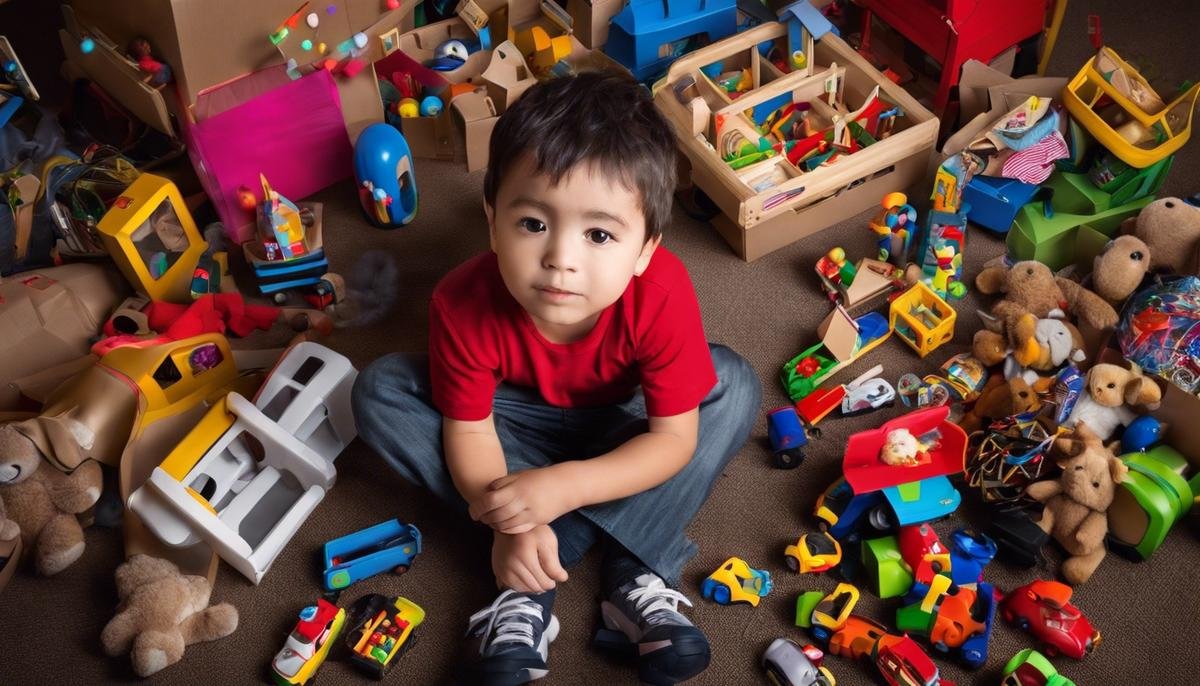
Implementing Strategies to Manage Toy Hoarding
Effective Strategies to Manage Toy Hoarding by a Child with Autism
Toy hoarding is a behavior common among children and can be more prevalent, and somewhat complex, in children with Autism Spectrum Disorder (ASD). This behavior may present some hurdles in a family’s everyday living spaces, but understanding is key to creating a thriving and comfortable environment for your child. How do we best handle toy hoarding effectively at home while giving the attention and care our young ones need?
- Gradual Toy Reduction: This method involves lessening the number of toys one by one, in a tactful and gentle manner. Fast protocol might shock or upset your child, so take things slow. Removing a few toys at a time can lead to a less cluttered environment, without causing unnecessary stress.
- Reciprocal Play: Promoting reciprocal play can effectively curtail a child’s need to hoard toys. It not only reduces the urge to own all the toys but also encourages social interaction and sharing, promoting positive behavior among children with autism.
- Ownership and Identity conversations: Open dialogues with your child about their collection helps in expressing their feelings of ownership and identity. These discussions help you understand the emotional tie they have to their toys, thus making it easier to manage their behavior.
- Donating or Helping Others: Teaching the value of giving is a rewarding strategy when managing toy hoarding. It is a compassionate way to address hoarding while instilling empathy. It can also be a lesson about considering others’ feelings and promote a generous spirit.
- Open Communication: Establish a transparent communication channel to discuss feelings and emotions related to hoarding. This step ensures your child feels heard, reducing anxiety and unease and promoting happiness.
- Patience and Understanding: Toy hoarding might appear unusual, but remember to approach it with an abundance of patience and understanding. The situation is as new and confusing to them as it is to you. Practicing patience is essential in molding their behavior positively.
- Professional Guidance: There’s no harm in seeking external help. Autism specialists, Therapists, or support groups can provide unique insights and coping strategies, ensuring your child and family can navigate toy hoarding efficiently.
Creating an environment that cherishes the unique characteristics of children with Autism Spectrum Disorder is crucial for a healthier, happier family environment. The goal isn’t to fix or change our children; it’s about helping our children grow and embrace their individuality. With the right strategies in place, managing toy hoarding will no longer feel like a daunting task. It will gradually become a part of your family’s harmonious journey filled with understanding, patience, love, and most importantly – acceptance.
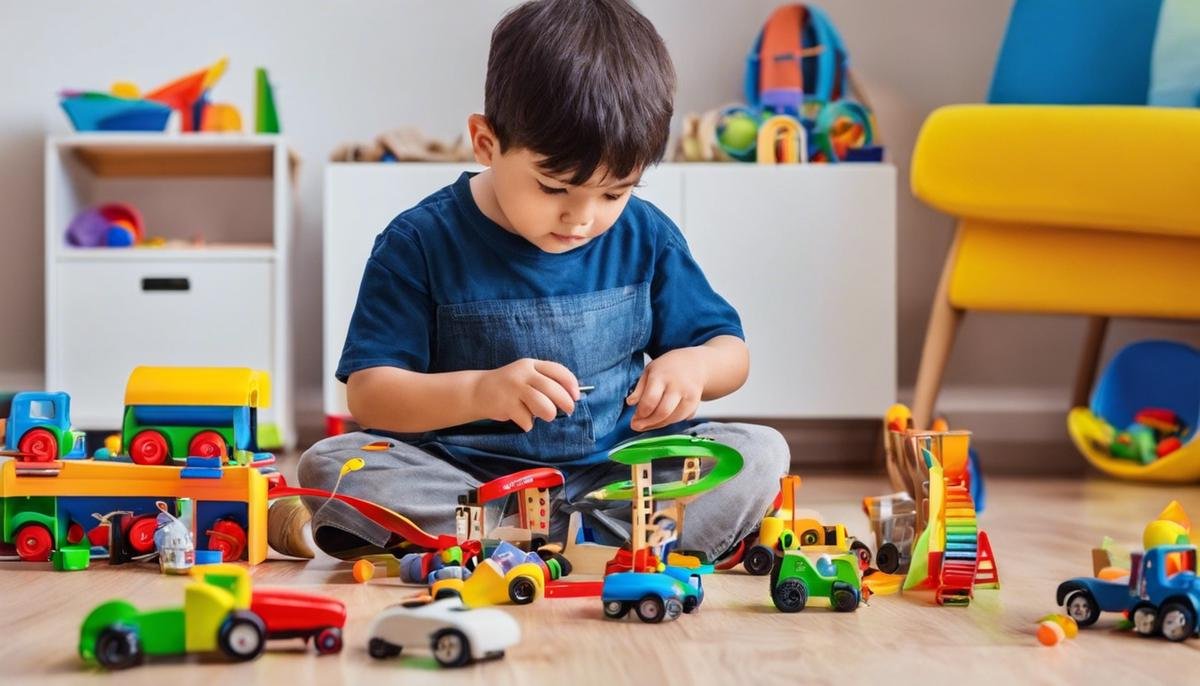
Creating a Hoarding-friendly Environment at Home
Creating a Hoarding-Friendly Environment For The Autistic Child: Embracing Ownership and Cultivating Growth
Building a nurturing home environment for an autistic child requires patience, understanding, and an undeniable dose of love. Coexisting successfully with behaviors such as toy hoarding also demands practical strategies and emotional tact. One cannot separate the child from the behavior, and thus understanding the relationship between these behavioral tendencies and autism becomes incredibly crucial.
To begin with, it’s integral to remember that children with autism experience the world differently. Information sorting and decision making can often be nerve-racking for them, transforming a simple task of sorting out toys into an emotionally charged event. Teaching a child with autism to let go of possessions, while also dealing with their heightened emotions, may be eased by a gradual reduction approach. Rather than forcing a sudden, substantial change, which could lead to undue stress, implementing a steady and gradual reduction of toys can be less overwhelming.
Reciprocal play adds another wonderful layer of effective strategy on this journey. This kind of play facilitates social interaction, encourages give-and-take, and slowly eases the child into understanding that toys are indeed sharable and can return back to them. This gradual approach, coupled with the empathy and patience, will foster a sense of security and make transitioning a smoother ride for the child.
Furthermore, introducing discussions that emphasize the value of helping and giving to others in contexts they can relate to, can be beneficial in mitigating hoarding tendencies. For instance, the idea of a favorite toy bringing joy to another child can be a relatable concept for them. It not only encourages them to share but also imbues a valuable life lesson of giving.
Central to managing hoarding behavior is open and healthy communication between the caregiver and the child. Being open to discuss feelings, especially transpiring from a loss of control, can help children cope and feel understood. After all, hoarding often stems from a place of finding comfort and control.
In this journey, professional guidance is a helpful ally. Autism specialists, therapists, and support groups can provide insightful tips and strategies tailored to suit your child’s needs. They can also offer comforting reassurance and fellowship to families navigating autism and associated behaviors like hoarding.
Lastly, but most importantly, is the aspect of acceptance – it’s the compassionate undercurrent that runs through this entire journey. Just as every child is unique in their own way, so is every child with autism. Their behaviors, including hoarding, form an integral part of their identity, and for a parent, there is immense beauty and strength in embracing this uniqueness, not just merely “dealing” with it.
By making a conscious effort to understand hoarding behaviors, showing empathy to the child’s attachment to their collections, and guiding them towards growth and sharing, you create a hoarding-friendly environment in your home that not only respects their needs but also nurtures their potential for advancement.
To create a safe space for an autistic child is to pave the pathway for a happy and rewarding family life. So remember, patience is your strongest tool, acceptance your best gift, and love, your greatest strength. With these, your family navigates autism successfully, building at every step, a lifetime of memories drenched in love, commitment, and shared victory.

Having taken this journey, we hope that you feel enlightened about the multifaceted nature of toy hoarding in children with autism. It is a behavior tied to a complex web of psychological, emotional, and functional needs of the child. Facing this reality may indeed be stressful for families, but equipped with our suggested strategies, practical tips, and deep understanding, we believe that this challenge can be surmounted. By creating a safe and friendly environment for the children’s needs, engaging with sound therapeutic approaches, and involving the child in the management process, we can turn hoarding from an overwhelming problem into an opportunity for positive growth and development. This is not merely about managing a behavior – it’s about casting a new light on understanding, empathy, and acceptance in the face of autism.




